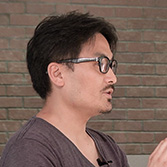In My Sky at twilight _ X–RyuBiho_curated by Han Jooryung
Artist RYU Biho has explored the intrinsic values of humans that have been disintegrated by huge capital, denoting that there might be hope in such a circumstance through a wide array of mediums (photography, documentary film, video, installation, etc.) primarily based on video. He has addressed troubles and issues of the times such as the absence of the object against which we have to feel resentment (Inner View, 2015) and those who have been marginalized due to industrialization (The Wanderer’s Song of Wind, 2015), suggesting a variety of artistic approaches to such matters.
This exhibition is intended to examine repetition, a striking quality in his works, and its meaning through his pieces such as My Meursault (2015) and The Wanderer’s Song of Wind (2015). When spectators see such works marked by striking repetition, they come to naturally perceive the repetitive images and think of what the artist intends to say. In such a case repetition can be described as a seminal factor to appreciate his works. The Wanderer’s Song of Wind on show at Gallery 1 features a man carrying his old mother on his back as he wanders from place to place. This work seems to hark back to an ancient practice of abandoning an elderly person to die at an open grave site. Where they are heading? Can they reach their destination? His concern for those who are alienated and forgotten over the course of urban development can be seen in this work.
My Meursault (2015) on show at Gallery 2 captures a man carrying something on his back while ascending a mountain. As the artist stated, this work was inspired by The Myth of Sisyphus by Albert Camus. After his actions incurred the wrath of the gods, Sisyphus was condemned to roll an immense boulder up a hill for eternity. This myth seems to underscore the severeness of the punishment and divine power in that the punishment itself is futile and meaningless. However, Camus closes his book with the sentence “One must imagine Sisyphus happy.” If that is the case, what we have to note in The Myth of Sisyphus is not merely the futility of repetitive punishment. When thinking of the situation from a Camusian perspective, it is important to heed how Sisyphus managed to overcome the punishment inflicted on him and imagine him as happy.
Ryu’s work is particularly characterized by such repetitiveness. In Andy Warhol’s work, which deviated from the idea that something singular and original has absolute value as a work of art, individuality passes away and originality becomes dull due to an endless repetition of the same images. To Ryu however, repetition is something in which recurring images raise a question and have us take note of this question. His work stays there in modern times when all are being used rapidly.
















